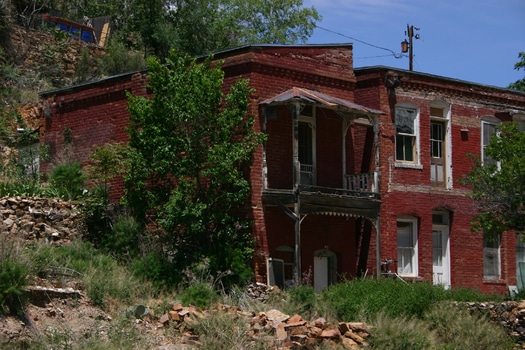COLUMBUS – It’s been years since the foreclosure crisis struck, yet dilapidated and abandoned houses can still be spotted on many Ohio streets.
A new report from Policy Matters Ohio says these blighted properties can divide neighborhoods and hurt property values.
William Whitney, chief operating officer for Cuyahoga Land Bank, says many of the 25,000 vacant properties in his county are in Cleveland neighborhoods.
“Half of the houses are boarded up,” he states. “A number of the others should probably be boarded up. It’s scary. The health hazards, the risk of gangs, meth houses, arson – just an environment where nobody should have to live.”
Ohio’s 22 land banks renovate existing homes and connect lots to make larger parcels of land available for development.
The federal Hardest Hit Fund provides most of the money, $71 million to the state for demolition.
But the report notes more than $100 million is needed in Cuyahoga County alone. It recommends funding be quadrupled and a line item be added in the state budget for blight removal.
Some houses are abandoned due to foreclosure. In other situations, the owner abandons the property when values drop, or the home becomes too expensive to repair.
Alison Goebel, an associate director of the Greater Ohio Policy Center, explains another issue stems from overseas investors who purchase property sight unseen.
“They’ll buy a property thinking that they’re getting a great property and then realizing ‘this is junk,’ there’s a lot of code violations on it,” she explains. “So, they don’t bother fixing it, they also don’t bother paying the property taxes – and so, the property continues to sit, blighting.”
Demolition is a short-term strategy to manage blight, but Goebel says that can still lead to untended vacant lots. She says communities need to look at leveraging funds to have the greatest impact, both short and long-term.
“The smart communities around the state that are really trying to be sophisticated about how they are deploying their resources are increasingly using both rehab and demolition to bring back neighborhoods,” she points out. “And I think those are going to be the places that have the most long-term, sustainable success.”
The report recommends prior to demolition, cities establish a plan for vacant land that could enhance community value – as parks, community gardens or urban farms.
And Goebel says a bill at the statehouse (HB 134) could help, by expediting the foreclosure and transfer of unoccupied, blighted property.






